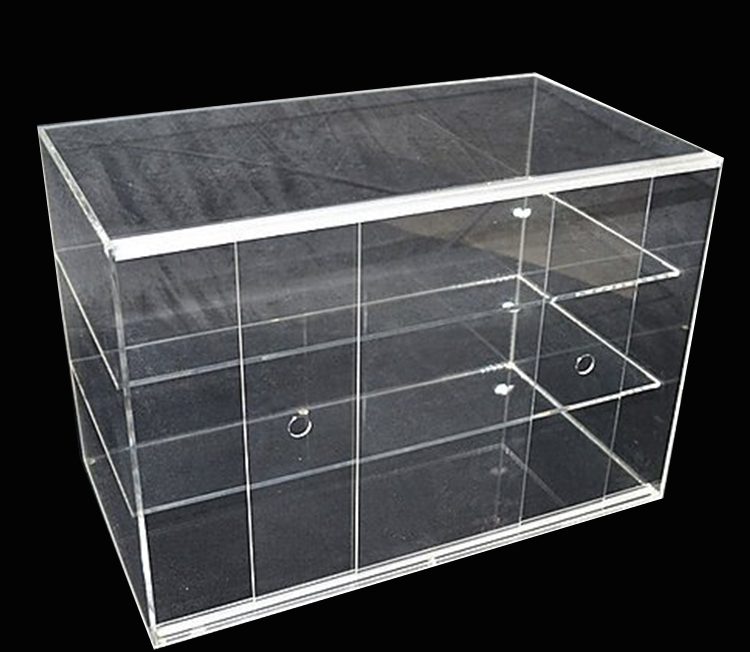Know The Facts Of Acrylic Displays

Acrylic display cases are available in a seemingly endless variety of shapes, styles and sizes to suit just about any purpose you can possibly imagine. They are found especially often in the retail industry, where they are used to display products or present information to customers. Typical examples include: easy-access pockets, menu holders, free-standing acrylic panels, acrylic cube displays, cube kits, acrylic poster holders, acrylic display cases, wall-mounted panels, pedestals and plinths.
Acrylic, in this context, is more correctly called Polymethylmethacrylate or PMMA, which is why people often refer to it using commonly known brand names or simply as ‘acrylic’ or ‘acrylic glass’. It is a transparent thermoplastic which was first developed in 1928 and first marketed in 1933 under the trademark ‘Plexiglass’. Since then it has become more widely known by its other common brand name: Perspex.
PMMA is a polymer produced from petroleum. It uses approximately 2kg of petroleum for every 1kg of PMMA produced, which has led many to question the sustainability of using PMMA as a material. However its properties make it extremely useful as a substitute for glass.
By altering the molecular structure of the material during the production process, the precise properties of PMMA can be altered, allowing the material to be more tailored to specific circumstances.
Acrylic has similar transparency properties to conventional glass, but it is considerably lighter and is also considered to be shatter-proof, meaning that, unlike glass, it snaps under stress rather than shattering explosively into hazardous shards.
Modified acrylic, using co-polymers added in the manufacturing process to add strength and impact-resistance, can be used as an alternative to polycarbonate when that material’s extreme strength and impact resistance are not required. Polycarbonate is expensive in comparison to acrylic, and although it has greater strength and impact resistance, modified acrylics can be made with sufficient scratch resistance and strength for most uses.
Used in art installations and for display purposes, acrylic has significant advantages over more traditional glass alternatives. It is available at a much lower cost, allowing acrylic display cases to be obtained in far greater numbers than glass. Acrylic is able to be manufactured in a far wider variety of shapes, sizes and colours than glass and can be made transparent or opaque as required – unlike glass. Acrylic also has significant safety advantages stemming primarily from its lighter weight, impact resistance and shatter-proof nature if broken.
Some examples of how an acrylic display case may be used include the following:
– Displaying a valuable product. High-value merchandise available for sale, such as electronics, may not always be suitable for handling by customers. In such cases a retailer may wish to protect the product by enclosing it in an acrylic display case for safe-keeping, This would allow this product to be kept physically isolated from the surrounding area whilst remaining in full view. Acrylic cases can also be custom-manufactured and adapted to work alongside retail alarms and other security systems to help secure valuable assets.
– Communicating information. Protecting poster and information displays from damage or deliberate tampering can be important, especially in environments where ensuring compliance is a high priority, such as financial services, healthcare or education. In these instances, protecting your displays with an acrylic – rather than glass – cover can ensure that they remain safe and secure at a reasonable cost. Acrylic will also ensure that your clients, staff and passers-by remain safe in the event that your display should become damaged for any reason, as the acrylic will not shatter or become sharp or hazardous if damaged.
– Menu, card or leaflet holders. Whether it is on a stand at an event, at your company’s reception desk or on the counter in a shop, it’s important to make leaflets and other literature stand out if you want them to be noticed by your customers. Acrylic literature stands are perfect for the job. Lightweight, low-cost and able to manufactured in a practically endless range of designs, colours, shapes, sizes and styles, they are able to meet the needs of almost anyone.
Despite being nearly 100 years old, acrylic-based products are as relevant today as they ever have been.
